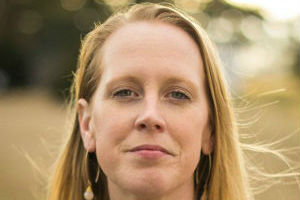
Jennifer Lewis has worked in mental health for nearly 20 years. She’s never had a client become a mass shooter.
“My clients are schizophrenic, they’re diagnosed with bipolar disorder, they’re diagnosed with all these serious mental illness, but they’re more apt to hurt themselves than hurt somebody else,” said Lewis, the Democratic Party nominee in the Sixth District, which covers a long stretch of the Interstate 81 corridor in Virginia.
People who don’t want to do anything about the gun part of gun violence will tell you that what we really need to do is something about mental health, implying that people with mental health problems are the reason we have the problem we have with gun violence.
“That’s what bothers me the most,” said Lewis, a hospital liaison with the Charlottesville-based Region Ten Community Services Board. “I get really emotional about it, because after these shootings, I have to go to work and talk to my clients about why they’re blamed for these things. And they don’t understand. They’re like, I’ve never done anything like this, I would never, you know.”
What makes it more frustrating for Lewis is that the people who don’t want to do anything about gun violence and try to tell you that the real problem is mental health then don’t do anything to provide more funding for mental health services.
“You know, I would totally roll over any day of the week and say, Fine, let’s blame it on mental health every day of the week, if that means you’re going to fund it, but that’s just not true,” Lewis said.
The reality of the mental health problem
According to the CDC, more than 50 percent of us will be diagnosed with a mental illness or disorder at some point in their lifetime, and one in five of us will experience a mental health episode in any given year.
One in 25 Americans lives with a serious mental illness, such as schizophrenia, bipolar disorder or major depression.
According to Mental Health America, half of U.S. adults with a mental illness don’t receive treatment, totaling more than 27 million people.
“My clients, their stories are exactly why I’m running for office, because I see all of the cracks,” Lewis said. “I mean, it’s like we don’t even have a net at all. My clients have taught me so much about life and about myself, and are so amazing in so many ways, and to know, to absolutely know, that we can do better, and we have the money to do better, we have the resources to do better, we have the people and the passion to do better, we literally just lack the political will, that frustrates me more than anything else.
“I could deal with someone saying, as a government, we don’t have the money to take care of everybody. OK, let’s figure something else out. But we do,” Lewis said.
The little things
The lack of funding for mental health is so pronounced that underwear is an issue. It comes up for Lewis in the context of what she does in discharge planning for her clients coming out of state psychiatric hospitals.
“I’ve been at the job for 10 years now, and it’s changed a lot in 10 years. Ten years ago, we had much a bigger pot of flexible spending. And I know some, most people, you might not think that some silverware, more than one pair of underwear, is mental health, but it is. You know, when I’m working with folks coming out of a place like Western State Hospital, which is a state-of-the-art psychiatric hospital, oftentimes people literally have just what they’re wearing on their body, they have nothing else.
“We used to have this kind of pot of money that we would be able to access, we’d have to submit a request, you know, I need this amount of money for underwear, you know, a couch, a bed, whatever it is, and that funding has really dried up over the last 10 years,” Lewis said. “I’m putting people in apartments with a bed, but that’s it. No couch, no TV, no phone, no silverware, no dishes, it’s literally a place to sleep. And although that’s great, and I’m very grateful that they have a roof over their head and a bed to sleep in, they don’t have anything else. And when they’re sitting at home, they’re lonely, they have nothing to entertain themselves with, that’s when they start getting into trouble.
“So, you know, again, people might not think that these things, these items, are essential to recovery and to stability, but it is. Having a place that you can feel comfortable, at home, and know that you’ve got food and know that you’ve got a microwave to warm it up in, that keeps you stable, that keeps you in recovery,” Lewis said.
The real roots of gun violence
So, half of us have mental health issues, half of those don’t receive treatment, and the most affected of those that do don’t get much help when it comes to recovery.
But none of that is the reason we have the problem with gun violence that we do.
The reason that we have mass shootings in this country is we have a toxic gun culture in this country that doesn’t exist anywhere else, Lewis said.
“Every other country deals with domestic violence,” Lewis said. “Every other country deals with mental illness. Every other country deals with suicides. Half of the gun deaths in this country are suicides. Yes, the mass shootings, they kill a lot of people all at once. But why on earth are half of our gun deaths suicides? Why are we so suicidal in this country?
“We’ve really got to peel back the layers of this country and get to the bottom of, you know, why we are such a sick country in so many ways,” Lewis said. “And again, it goes back to, we can do better. And I think, you know, if we all were taking care of each other, we wouldn’t be such a sick country. Because when you start giving of yourself and you care about other people outside of yourself, literally makes a better community, a better society.”
The armed teacher fallacy
The people who don’t want to do anything about gun violence, and who want to try to pass it off as a mental health problem, also suggest that a smart workaround to shootings in schools is to arm teachers.
As if, right?
“Before my current job, I did therapeutic day treatment in our schools, so I’ve worked in elementary, middle and high schools all in this area,” Lewis said. “I cannot imagine arming teachers, when they’re already dealing with, you know, 20 kids on their own, all of the things that are going on, you add any kind of special needs children into that you got it, you know, and then you have a mass shooting incident. So, you’re trying to get the kids to be quiet, settle down.
“Are the teachers going to have their guns loaded all day long, just waiting for a mass shooting? Or is the gun on them? And the ammunition, is it locked up somewhere else? I mean, really? How is this even going to work?” Lewis said. “If the cops who are essentially trained, and I assume they go to the gun range every now and again to keep up with their gunmanship, you know, they can’t even shoot someone with accuracy, and they’re trained, you want to just give a handgun to a teacher and say, shoot.
“We can’t just say teachers, you’ve got to carry a gun. Like, we have to make sure that they like it. And the teachers that I know, personally, you know, my husband’s parents are both retired teachers, I don’t know a single teacher that wants to carry a gun,” Lewis said.
Story by Chris Graham










